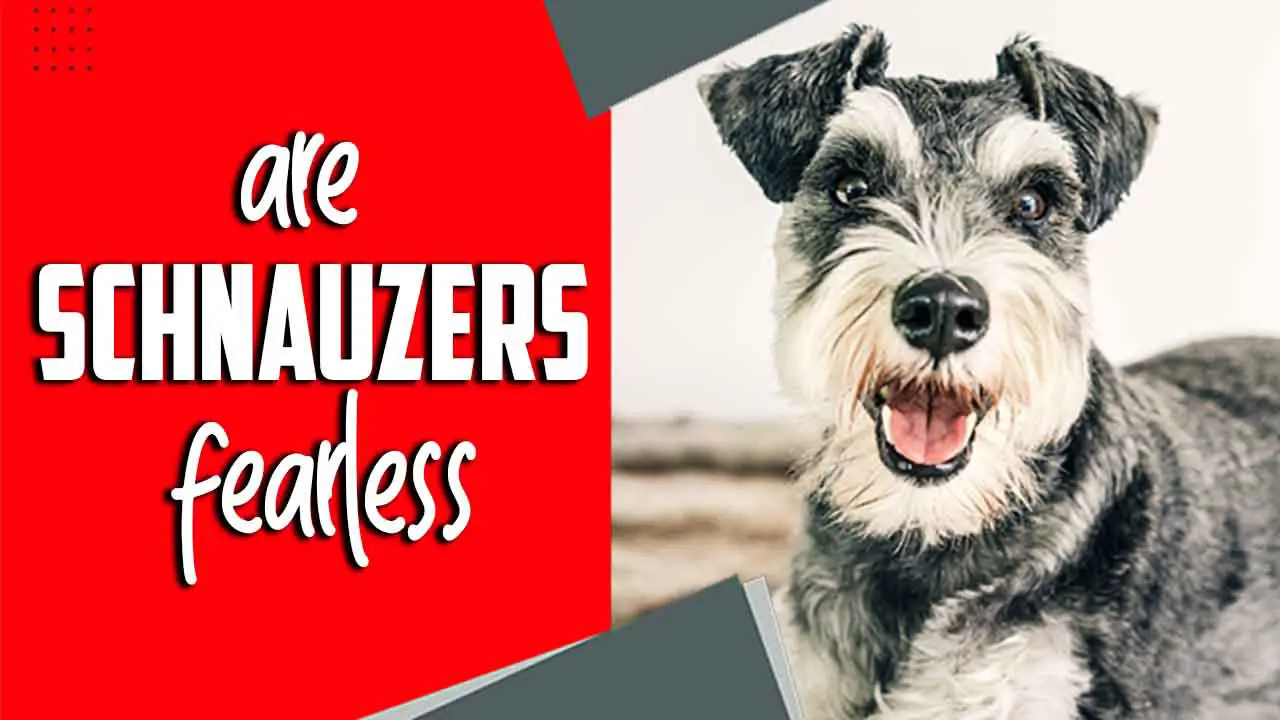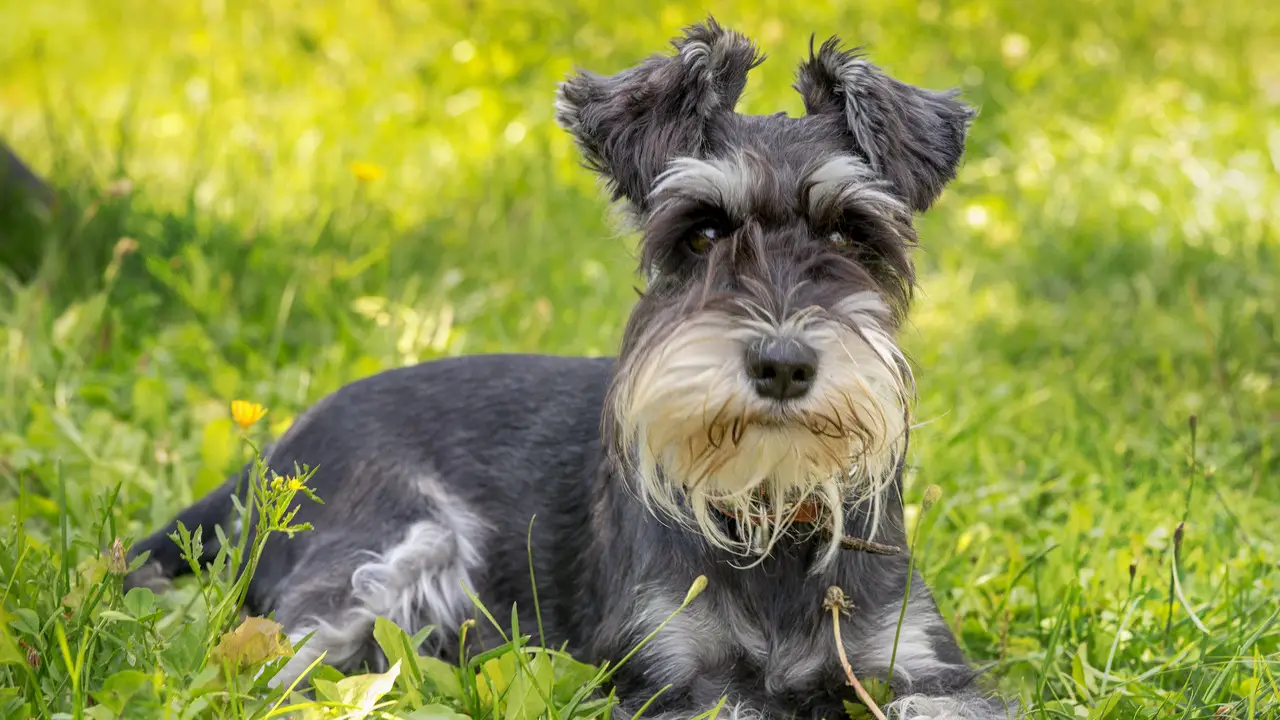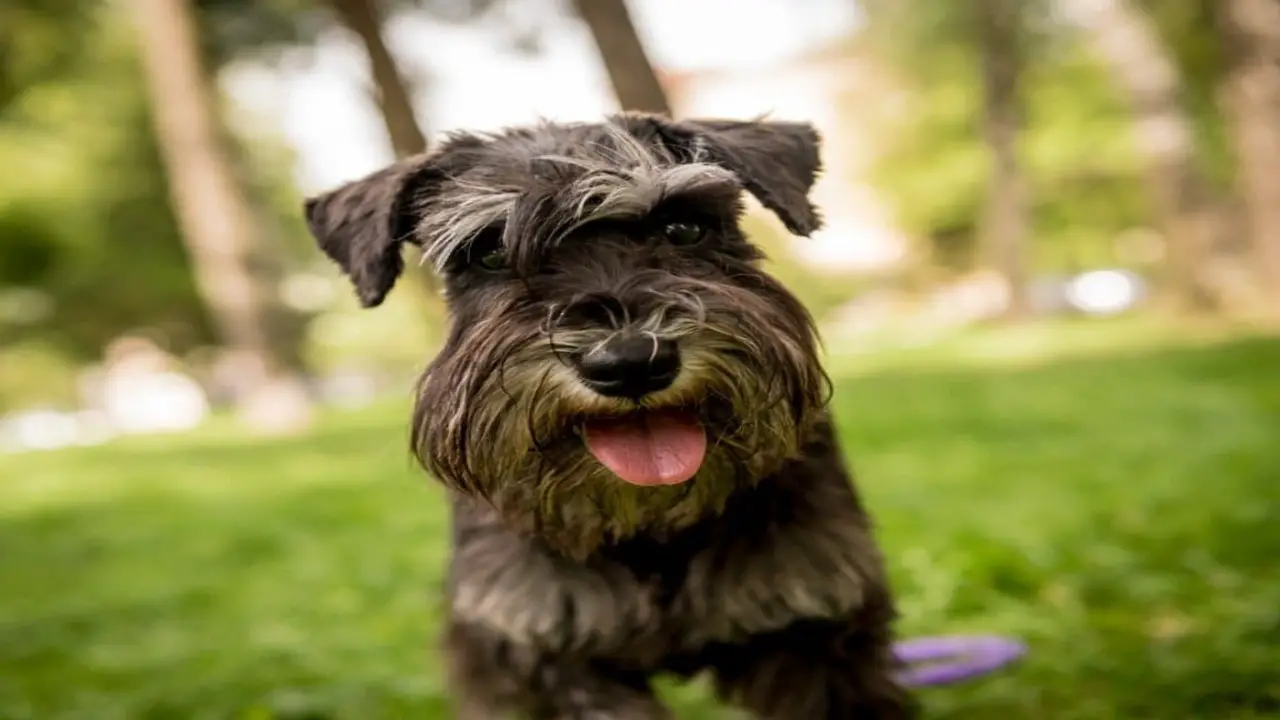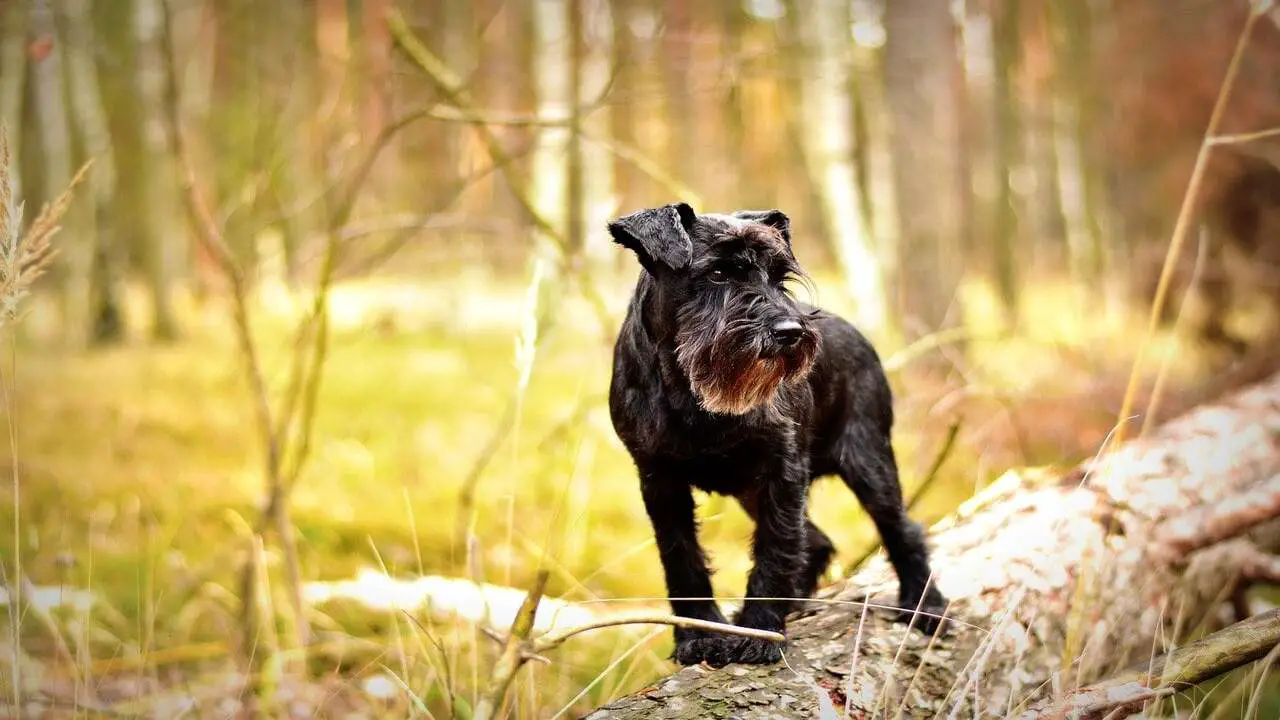With their distinctive beard and wiry coat, Schnauzers have been a beloved breed for decades. Known for their intelligence, loyalty, and affectionate nature, these dogs make great companions and have become one of the most popular breeds in the world.
However, one aspect of the Schnauzer’s personality that often stands out is their fearlessness. Many owners and enthusiasts have claimed that Schnauzers possess a fearless attitude that sets them apart from other breeds. But is this statement true? Are Schnauzers fearless?
Here we will explore the origins of the Schnauzer breed, their physical and behavioral characteristics, and examine whether or not they can be rightfully called a fearless dog breed. So, let us delve into the world of Schnauzers and discover the truth behind their reputed fearlessness.

Are Schnauzers Naturally Fearless?
The debate is whether Schnauzers are naturally fearless despite being popular for their courage and confidence as a breed. Like any dog breed, Schnauzers have their unique personalities and temperaments, which can vary from one individual to another. However, many Schnauzer owners and breeders report that their dogs are bold and self-assured, often displaying a strong protective instinct towards their owners and homes. This can make them excellent watchdogs and loyal companions. Proper socialization, training, and positive reinforcement can help to build a Schnauzer’s confidence and reduce any fears they may have.
Factors To Know Why Are Schnauzers Fearless Companions

Schnauzers are intelligent and loyal dogs that can be fearless in many situations. However, they may also have fears or phobias that must be addressed with proper training. Training a Schnauzer to be fearless involves understanding its temperament, genetics, and personality and using positive reinforcement, gradual exposure, desensitization, confidence-building exercises, and obedience training.
These methods can help a Schnauzer overcome its fears and become more confident and happy. A fearless Schnauzer is not aggressive or reckless but rather calm and courageous. Here are factors that explain why are schnauzers fearless.
Understanding Schnauzer Temperament
- Schnauzers are popular to be intelligent and alert dogs.
- They are loyal and friendly to their families but may be reserved or wary of strangers.
- This breed is adaptable and can live in various environments, including apartments.
- Schnauzers are energetic and require regular exercise and playtime to stay happy and healthy.
- They have a strong prey drive and may chase small animals, so they should be supervised during outdoor activities.
- This breed can be independent and may require consistent training and socialization from an early age.
Genetics And Temperament Of Schnauzers

Genetics, environment, and training influence the temperament of Schnauzers. German working dogs for hunting, herding, guarding, and ratting are the ancestors of Schnauzers. These tasks required Schnauzers to be brave, alert, agile, and independent. Modern Schnauzers can modify these traits by how they are raised and trained. Some Schnauzers may inherit more dominant or submissive tendencies, energy or calmness, sociability or aloofness, etc. These factors can affect how a Schnauzer behaves and responds to different situations.
The Role Of Instincts In Schnauzer Behavior
Schnauzers are often described as fearless dogs; their instincts heavily influence their behavior. As a breed originally developed for ratting and guarding duties, Schnauzers have an instinct to be alert, protective, and confident. This can make them appear fearless in certain situations, such as confronting threats or defending their territory.
However, it’s important to note that individual Schnauzers may vary in their levels of fearlessness based on their genetics, upbringing, and socialization. Some may be more cautious or reserved, while others exhibit bolder personalities. Understanding the role of instincts in Schnauzer behavior can help owners better understand and work with their dog’s unique temperament.
Schnauzers And Their Protective Instincts
Schnauzers are popular for their protective instincts and are often fearless when defending their loved ones. This breed is naturally alert and watchful, making them excellent guard dogs. They have a strong sense of loyalty and will not hesitate to bark or confront any perceived threats to their family or territory. While their small size may deceive some, Schnauzers can assert themselves quickly and be quite formidable when protecting those they care about. However, it’s important to note that proper socialization and training are key in ensuring this protective instinct is channeled appropriately and does not result in aggression towards strangers or other animals.
Schnauzers As Loyal Companions

Schnauzers are known for their loyalty and devotion to their owners, making them excellent companions. While they may not be fearless in the sense of being completely without fear, they are generally confident and courageous dogs. Schnauzers have a strong instinct to protect their loved ones, and they often act fearlessly when defending their family or territory. However, like any dog, individual temperament can vary, so it’s important to socialize and train your Schnauzer from a young age to ensure they grow up to be well-rounded and confident dogs. With proper training and care, Schnauzers can make wonderful and loyal companions for individuals and families.
Training Schnauzers To Overcome Fearfulness
every dog is unique, and it may take time for your Schnauzer to overcome their fears. Be patient, provide plenty of positive reinforcement, and celebrate small victories. You can help your Schnauzer become more confident and less fearful with time and effort. Training Schnauzers to overcome fearfulness can be a challenging but rewarding process. It is important to approach the training with patience, consistency, and positive reinforcement. Here are some steps to help you train your Schnauzer to overcome their fears:
Positive Reinforcement
Positive reinforcement is a training method that rewards a dog for performing a desired behavior or action. You can give the dog treats, praise, toys, or attention whenever it does something right. Positive reinforcement encourages the dog to repeat the behavior in the future and strengthens the bond between the dog and the owner. Also, Positive reinforcement is especially effective for training Schnauzers because they are smart and motivated by rewards. Positive reinforcement can also help a Schnauzer overcome its fears by associating positive outcomes with scary stimuli.
Gradual Exposure

Gradual exposure is a training method that involves introducing a dog to something it fears in small doses and increasing the intensity or duration over time. This can help the dog become more comfortable and less anxious about the feared object or situation. You should carefully and slowly expose the dog gradually without forcing it to face its fear too quickly or intensely. You should pair gradual exposure with positive reinforcement to reward the dog for its progress and bravery. Gradual exposure can help a Schnauzer overcome its fears by reducing stress and increasing confidence.
Desensitization
Desensitization is a training method that involves exposing a dog to a low level of a feared stimulus until it becomes less sensitive or reactive to it. To desensitize a dog, you can play sounds, show images, or bring objects it fears at a distance or volume that does not trigger its fear response. You should gradually and consistently desensitize the dog without increasing the stimulus level too fast or too much. Additionally, you should combine desensitization with positive reinforcement to reward the dog for its calmness and tolerance. Desensitization can help a Schnauzer overcome fears by reducing arousal and negative associations.
Confidence-Building Exercises
Confidence-building exercises challenge a dog to use its skills, abilities, and intelligence in a fun and positive way. This can include teaching the dog new tricks, playing games, exploring new places, or doing agility courses. Confidence-building exercises can help a dog develop self-esteem, trust, and independence. Confidence-building exercises can also help a Schnauzer overcome its fears by increasing its sense of control and mastery over its environment.
Fear-Inducing Stimuli

Fear-inducing stimuli are things that trigger a fear response in a dog. This can include loud noises, strangers, other animals, unfamiliar objects, or certain situations. Fear-inducing stimuli can cause a dog to react with fear behaviors such as barking, growling, hiding, trembling, or fleeing. If not addressed properly, fear-inducing stimuli can affect a dog’s quality of life and well-being. Fear-inducing stimuli can be overcome by using training methods such as positive reinforcement, gradual exposure, desensitization, and confidence-building exercises.
Obedience Training
Obedience training is a training method that involves teaching a dog to follow commands and rules from its owner. This can include basic commands such as sit, stay, come, heel, or leave it and more advanced commands such as roll over, shake, or speak. Obedience training can help a dog learn to respect its owner’s authority, communicate better, and behave appropriately. Obedience training can also help a Schnauzer overcome its fears by providing structure, guidance, and security.
Consistency
Consistency is a key factor in the successful training of any dog. Also, Consistency means applying the same rules, expectations, and consequences for the dog’s behavior at all times and in all situations. Consistency also means using the same commands, cues, and rewards for the dog’s actions. Consistency helps the dog understand what is expected of it and what will happen if it does or does not comply. Also, Consistency helps the dog trust its owner and feel more confident. Consistency is essential for training a Schnauzer to be fearless because it reduces confusion, frustration, and anxiety.
Common Fears And Phobias In Schnauzers
Schnauzers are generally fearless dogs but may also have common fears and phobias that affect their behavior and well-being. Some of these fears and phobias are Thunderstorms and fireworks: These loud noises can scare many dogs, including Schnauzers. They may cause the dog to panic, hide, or try to escape.
This is a condition where the dog becomes extremely anxious and distressed when left alone or separated from its owner. It may cause the dog to bark, whine, chew, or urinate inappropriately. This is a situation where the dog has to face unfamiliar people, places, smells, sounds, and procedures that may cause it pain or discomfort. It may cause the dog to resist, struggle, or snap.
Conclusion
Schnauzers are indeed a fearless breed of dog. With their bold and confident demeanor, they make excellent watchdogs and loyal companions. This specific trait is crucial to their success in various fields, such as law enforcement and search and rescue.
The importance of this attribute cannot be overstated, as it allows them to perform their duties with precision and effectiveness. Furthermore, the results of this fearlessness are evident in their success rate in these fields and in their ability to protect their homes and families. Are Schnauzers fearlessness a defining characteristic that sets them apart from other breeds and contributes significantly to their success in various roles?
FAQ’s:
Do Schnauzers Get Along Well With Other Pets?
Generally, Schnauzers can get along well with other pets, especially if they are socialized from a young age. However, some individual Schnauzers may be dominant, so proper introductions and monitoring are essential.
How Much Exercise Do Schnauzers Need?
Schnauzers are moderately active dogs and require regular exercise to stay healthy and happy. Daily walks, playtime, and mental stimulation are important for their physical and mental well-being.
How Often Should I Groom My Schnauzer?
Schnauzers require regular grooming to maintain their distinctive appearance. They need regular brushing, trimming, and professional grooming every 4-8 weeks to keep their coat in good condition.
Are Schnauzers Good Family Pets?
Yes, Schnauzers can make excellent family pets. They are affectionate, loyal, and often good with children. Early socialization and training are important for a harmonious family relationship.
Are Schnauzers Prone To Any Health Issues?
Like all breeds, Schnauzers may be prone to certain health conditions, such as hip dysplasia, eye problems, and skin issues. Regular veterinary check-ups can help detect and manage any potential health concerns.

